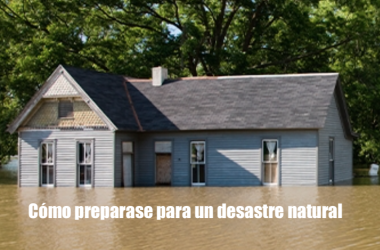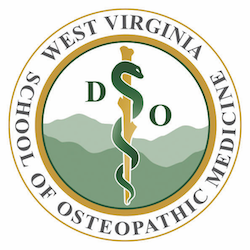Hello editors,
Here is the 11-24-13 Kids’ Health article and art. You will find the article – below – and cutlines for four pieces of art plus the logo.
Article, with Kids’ Health logo, with Juvenile Commitment Rates graphic, with State Housing Profile graphic, with color headshot of Paul Sheridan
Cutlines for four pieces of art.
Name line for Photo No. 1 (Dennison Headshot): Brandon Dennison, executive director of the Wayne-based Coalfield Development Corp.
Cutline for Photo No. 2 (Poverty PDF): This graphic by the National Low Income Housing Coalition shows low-cost housing is in shortest supply in some southwest and north-central counties.
Cutline for Photo No. 3 (Juvenile PDF): According to data compiled by the Pew Charitable Trusts, West Virginia is one of only five states where juvenile confinement is increasing. “All of the research suggests that community-based programs are the way to go,” said Paul Sheridan, interim executive director of the West Virginia chapter of the American Civil Liberties Union. “It seems that most of the states are following that research. We are one of five states moving in the wrong direction.”
No. 3 – Juvenile commitment rates graphic
Cutline for Photo No. 4 (Sheridan headshot): Paul Sheridan, interim executive director of the West Virginia chapter of the American Civil Liberties Union.

QUOTE:
“In addition you have the lifetime accrual: A child is better ready for school so they don’t need special (education), they don’t need remediation, they’re more likely to not drop out, and they don’t end up in prison. The programs work. We just need to expand them a little bit.”
Jim McKay, state director of Prevent Child Abuse West Virginia, speaking about the benefits of programs focused on making babies healthier at birth.
SUGGESTED HEAD: Child poverty coalition defining goals, benefits
By GEORGE HOHMANN
For the WVPA
Editor’s Note: The following is part of the West Virginia Press Association’s series on the “Our Children, Our Future” Coalition. The association is following the coalition’s efforts to develop and push legislation to combat child poverty during the 2014 session of the West Virginia Legislature.
CHARLESTON — A spot check of four organizations participating in the “Our Children, Our Future” coalition to fight child poverty reveals that some are honing specific proposals while others are working on long-range goals.
Representatives of more than 30 organizations gathered in Beckley and Bridgeport in August to work on 18 initiatives ranging from a proposal to prohibit federal food stamp recipients from using benefits to buy soft drinks to an effort aimed at increasing the state minimum wage.
Proposals were further refined in late September at a symposium at the state Capitol, where members of the House and Senate Joint Committee on Children and Families were briefed.
Since the Charleston symposium, coalition participants have been figuring out exactly what they want to ask for when they meet Dec. 13. That’s when the 18 original proposals will be whittled down to about five. All of the participants will be asked to push for those five when the Legislature convenes in January.
The group advocating affordable housing reform is working on a detailed package of proposals under the “Quality Homes, Quality Jobs Act” banner, said Brandon Dennison, executive director of the Coalfield Development Corp., which is based in Wayne.
“We’ve been working to get the proposal more and more specific,” Dennison said. “We will have a community meeting in Wayne in late November. …We will make a presentation before the Joint Committee on Children and Families on housing and workforce development issues.”
Dennison said his group’s position is that “a home is the foundation to a good quality of life, and the research backs us up on that. Students don’t perform well in school when they don’t have a safe, warm place to go home to at night. Employees don’t perform well in the workplace if they don’t have a safe, warm, affordable place to go home to at night.
“Housing is really important and yet it’s been left out of the conversation in West Virginia for a little while now. That’s our philosophical argument for why, of the 18 issues, we feel housing should be the top one.
“We want to support community-based entities that know the people, know the community, and therefore put realistic, broadly supported projects together in our communities,” he said.
Affordable housing reform advocates want increased funding for the West Virginia Affordable Housing Trust Fund. Created by the Legislature in 2001, the fund gets a $20 fee levied on every real estate transfer in the state. The fund’s website says that over the years it has provided a total of $2.2 million to 45 organizations – including the Coalfield Development Corp. — which has resulted in 250 housing units.
“The fund exists solely for the purpose of promoting affordable housing for lower income families,” Dennison said. “It’s been very successful. But it only has one staff person running a statewide program so it could be doing so much more.”
Asked if housing advocates should be pushing for an increase in the $20 real estate transfer fee, Dennison said, “I don’t know if that’s winnable. We do want to see the trust fund’s profile raised.
“In the foreclosure crisis, when banks were doing inappropriate things with housing consumers, the state Attorney General and a bunch of other attorney generals sued the big banks and won. It makes a lot of sense to me that that money would go into something like the housing trust fund because that’s a housing related case and the trust fund would address housing related issues.”
Another proposal: Put interest earned on renters’ security deposits in the trust fund.
The housing group is also looking at ways to increase the ability of municipalities to create land banks and at tying housing development in with workforce training.
“We have a fantastic on-the-job training program,” Dennison said of the Coalfield Development Corp. “As we’re developing units of affordable housing we’re developing the skills of lower-income individuals on the job. And we’re partnering with the local community college so the individuals get college credits for that. We do some life coaching as well.
“A good housing strategy can be a good jobs strategy,” he said. “I think that’s very attractive.”
Jim McKay, state director of Prevent Child Abuse West Virginia, is leading an effort to expand in-home family education programs, which provide voluntary parenting education and support. They often begin before the birth of a child. Services are provided in families’ homes by trained home visitors that use research-based curriculum. They help families succeed and get off to a smart, healthy start.
McKay said it has been shown that pre-birth visits to a family can help in many ways. One example: Such visits can decrease the rate of low-birth-weight babies – a problem West Virginia struggles with. A program that reduced the rate of low-birth-weight babies by just 2 percent would quickly pay for itself, he said. “In addition you have the lifetime accrual – a child is better ready for school so they don’t need special ed, they don’t need remediation, they’re more likely to not drop out, and they don’t end up in prison. The programs work. We just need to expand them a little bit.”
Such services are provided by nonprofit, community-based organizations like Team for West Virginia Children, headquartered in Huntington. It operates the Mountain State Healthy Families America program in Mason, Cabell, Lincoln and Wayne counties. Prevent Child Abuse West Virginia — the organization McKay heads — is a unit of Team for West Virginia Children.
Families in 25 counties do not have access to home visiting services. Even in those counties where services are available, “we’re not serving all of the families that could benefit,” McKay said.
Advocates are recommending that the state adopt the goal of offering statewide coverage, “similar to what they did with pre-K, when they had a multi-year implementation plan,” McKay said. “We’d like to see them make that commitment and make progress to get us there over the next seven years.”
It would cost an estimated $26 million a year to expand services statewide to all of the families that would want to participate. “You’re talking about $3,000 to $4,000 per family, which is less than the cost of child care and less than the cost-per-pupil expenditures in public schools,” McKay said. “But it is definitely a sizable investment. We recognize that. We feel like it’s a choice of paying a little now or a lot later. For years we’ve been paying a lot more later.”
While the housing group delves into specific legislative proposals and the home visitation advocates want to expand statewide, some others said they need more time to develop systemic reforms.
That’s the route juvenile justice reform advocates seem to be headed, said Paul Sheridan, interim executive director of the West Virginia chapter of the American Civil Liberties Union.
“I think there’s a consensus among the stakeholders that sending kids away to secure facilities is an over-used strategy when it comes to adjudicated youth,” Sheridan said. “The challenge is figuring out where to go with that. What we may be looking for in the next several months is the beginning of a planning process that will take some time to produce results.”
Some aspects of juvenile justice reform are more complicated than they appear to be at first glance, he said. For example: If you want to develop community programs, you’ve got to shift money from facilities to those programs. The easiest way to do that would be to shift money currently spent on out-of-state placements to in-state programs.
“It turns out that some of the out-of-state placements are done from border areas where it may be that by sending a kid to a facility out of state, you’re actually keeping them closer to home than you would if, for instance, you’re in the northern panhandle and send a kid to southern West Virginia.
“I think we need to get a better handle on this,” Sheridan said. “Some of the judges who have really good reputations for being very kid-oriented make use of facilities. Legislation that would limit judicial discretion without having a better handle on what kind of considerations are going into this might be counterproductive.”
Sheridan said state Sen. William Laird, D-Fayette, has pointed out another concern: “Because we’re such a small-population state spread out over a large area, one of the problems that sometimes comes up is equity between places. Sometimes it’s easy to say, ‘It’s the community programs,’ and you get your community programs in the big cities and nobody has really thought through the fact that if you’re going to do it in a way that’s going to be fair you have to be serving the whole state.
“Part of what we learned in the symposium discussions was that there are lots of moving pieces and the real payoff would be taking a bigger step backward and coming at this in a slightly grander way.”
The situation is similar for foster care reform advocates. When it comes to reforming the system, “We need much more than just a legislative policy,” said Angie Gee-Hamilton, executive director of Pressley Ridge’s operations in West Virginia, Virginia and Ohio.
Pressley Ridge provides educational opportunities, foster care connections and other services for children in six states and two foreign countries.
“For example, we would like to incorporate flexible funding models in West Virginia because the way we’re funded in West Virginia right now, we’re very boxed in and it is not conducive to the way that we need to be providing services to children and families to get lasting and long-term impacts.
“There are all kinds of things around that one issue,” Gee-Hamilton said. “We need lots of other support because we’re primarily funded through Medicaid and the Department of Health and Human Resources. Many of our issues are like that.
“So how we got involved (with the coalition) was, we wanted to use it as a forum to get key stakeholders together to talk about all of the barriers. We knew what our barriers were but we wanted to hear from others.
“We’re not going to have one thing we’re taking into December. It’s much more complex.”







